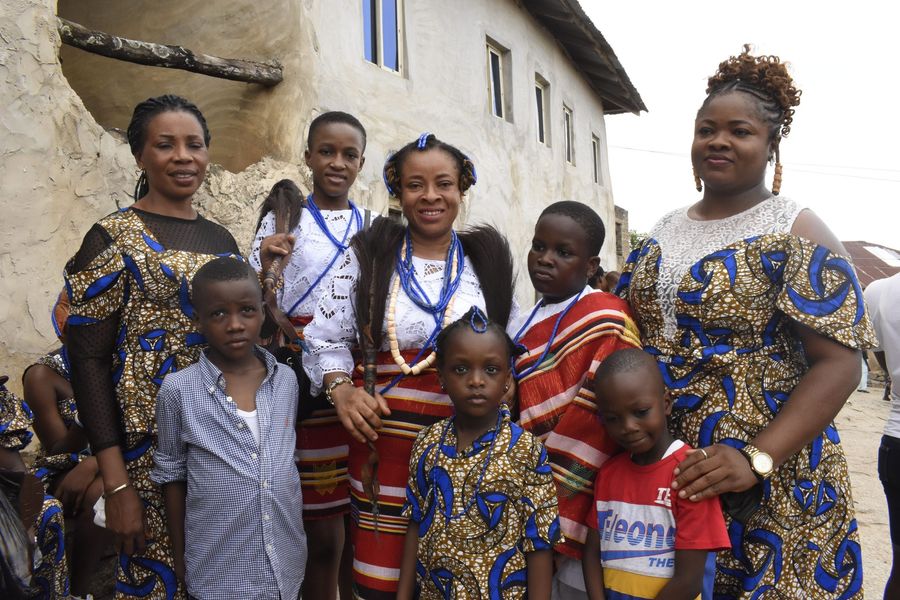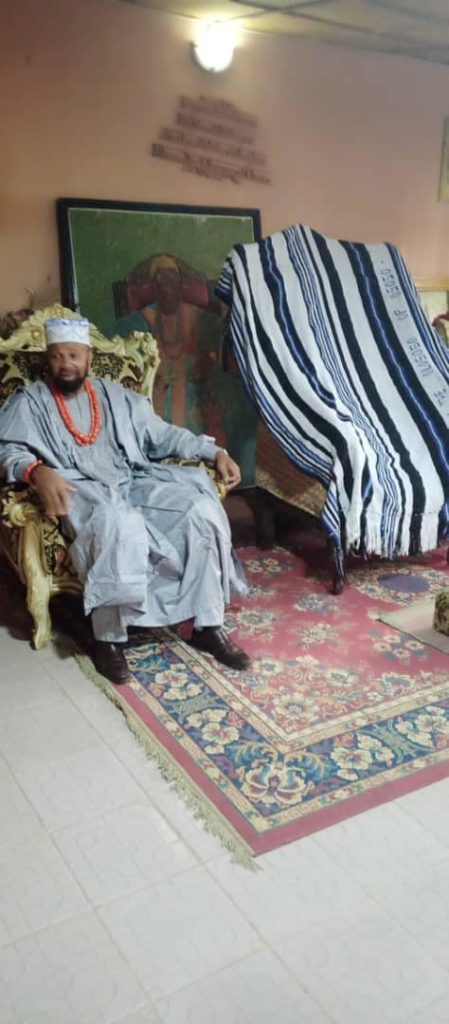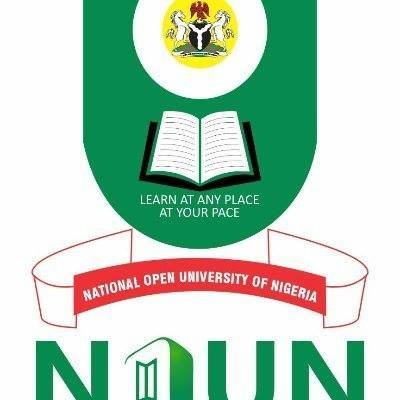Different communities around the world celebrate festivals as events centering on some characteristic aspect of community life, its religion and culture. A festival constitutes a typical case of localization as well as culture interrelationship. Next to its religious significance or folklore, food and dance are also vital aspects of many festivals. Akoko Edo community newspaper editor Albert Afeso Akanbi was witness to the Ikpena version of the all-important 7-yearly Itakpo festival of Ososo people, an event that took place in April, 2022, and in this piece, the first of many to come in our “Festivals Around Akoko-Edo LGA” segment of the paper, he writes about the beauty of Itakpo and how stakeholders can use it as a means of fostering peace and unity among the people.

We arrived to a celebratory atmosphere in Ososo community on the evening of Good Friday, April 15th, 2022. Though it was Easter weekend, this year the Christian holiday coincided with the most important festival of Ososo people, the Itakpo festival. Although Ososo culture is replete with all kinds of festivals, some indigenous to the people, others borrowed, like the Unehe festival, Itakpo is generally considered as the mother of all festivals. This perhaps explains why, even though many festivals of the people have faded with time, Itakpo still remains till this day. It is seen as a major connection between succeeding generations of Ososo people to their forebears.


The importance of the Itakpo, a festival celebrated every seven years by each of the four (Udu-Irevbho was recently upgraded to an Unuku-making it five quarters) quarters in Ososo namely Anni, Egbetua, Okhe and Ikpenna, can be seen in the efforts put in the preparation for the event and the number of days it takes to see through the entire process.
Analysts say that since Ososo people take turns to celebrate the festival, members of other quarters who are eligible can choose to participate and celebrate with their age group in any hosting quarter on the condition that they are of the same kindred and meet the criteria of the group celebrating. This is because the festival is celebrated much the same way with very slight variations, in all of the quarters.
In his booklet “Itakpo: The Root of Ososo Community”, Mr. Joseph Aiyelangbe Giwa writes that “Due to the elaborate way this festival is celebrated brothers of the same mother do not at one period belong to one and the same age group. This arrangement does not hold half-brothers back. This exception, perhaps, was handed down as an economic relief and convenience, but not forbidden except for the cost and what it involves for the family to be able to handle. This festival was hitherto regarded as the costliest in Ososo. During these period visitors as well as relations from far and near are feted with food and assorted drinks. This is allowed to continue for three months where all celebrants are known and addressed as “Okhogbe” (a hero) and are dressed in native wears, coral beads and must be dressed in a cap of choice throughout the period, carrying with them the traditional horse tail”.
Many people that I spoke to during the festival were agreed that Itakpo is the major connection to the roots and forbears of Ososo people. Its spiritual significance is also in honour of Evesho Ememah, the almighty God, who saved the people of Ososo from the land of bondage and brought them to the present location. The festival is fully Ososo as no aspect of it is borrowed. It is also representative of the spirit and essence of the Ososo man, the protection of the people from time immemorial till date.


Mr. Augustine Jerumeh in his book “The History and Traditions of Ososo” writes that the word Itakpo literally translates to “spreading out” or “large following”. Any wonder then that most of the stories and traditions associated with the festival aligns with migration and expansion?
There are basically 6 age groups in Ososo namely; Ekua-lwewere, Ekuabhoko, Eku-abhirebho, Eku-awereya, Eku-huabhiretonorugbe, and Eku-adomi. One has to graduate from one stage of these age groups to another as they have significant roles to play in the community and in the life of the average Ososo person. The final stage is when the Ososo man becomes eligible to celebrate Itakpo, after which the festival paves the way for him to become a chief of Ososo land. The celebrant is expected to shun all evil and lead a pure life if he must avoid a bad fate, like death, befalling him, pre-graduation for the Itakpo festival and thereafter.
Because the Eku-Iwewere age group are adolescents, they are seen as potential future elders and so are given no role to play in the festival. Gradually, the Ososo man graduates from this adolescent group through Eku-Abhoko, the young adult, to Eku-Abhirebho, the one who is now old enough to court a female, Eku-Awereya, the ones who are considered to have worked hard enough for the community and as the word literarily translates, now needs to rest, to Eku-Airetonorugbe, the defenders of the community to Eku-Adomi. The festival also motivates the cleaning of the entire town as young men are conscripted to clear all the route for the festival procession and the entire town. Then gradually, having fulfilled all the demands of tradition, the Ososo man can now beat his chest and say he is qualified and eligible to take part in the festival as a celebrant.
During the festival, apart from being required to have many tubers of yams, well fed goat for slaughter among other traditional rites, group of celebrants are expected to come together to clean the Egbovie where they would put together all the items like the dried bush meat they brought with them individually, which will be re-shared amongst the members. The significance of this according to Mr. Giwa is that an oath has been established amongst members, which does not permit adultery with other members’ wives, no stealing and possession of diabolical charms that can do any harm to Ososo people, and generally shunning all evil.

Itakpo signifies growth, evolution, sharing, merriment, love, purity and no harm or evil to anyone, it stands for living pure for the sake of the community, reverence for the forefathers, and care for the weak and the children.
At the start of the festival, hardworking members of the age group are identified and appreciated. This is to inspire others to hard work. Items ranging from yams, goats, life birds, cones of salt, melon, locust beans, cows, umbrellas, cloths and even vehicles are freely given and accepted as gifts.
As we transverse the entire Ososo town, we found that although it was Ikpenna quarters that was celebrating, the entire town was in a festive mood. The town was filled with visitors, Ososo sons and daughters from all around the world; everyone visited celebrants freely and enjoyed the moments with them. There was dancing with special songs about the Itakpo that rang out from every nook and cranny of the town. Indigenes from surrounding towns like Okene in Kogi State came around too. People were served assorted meals and drinks inclusive of the traditional Ososo drink known as Ato – a kind of wine made from fermented guinea corn.
There was also the camping phase of the festival – a journey that commenced at Adikhorikho, whose significance is the migration of Ososo people from Ogbe quarters in Benin during the time of Oba Ozolua. Before the camping exercise, a special moimoi, (“irezo’’ in Ososo dialect) a local delicacy made from blended beans and dried bush meat, is prepared for the celebrants for this long journey. At camp, prayers are said for the country Nigeria, the clan head of Ososo, the graduating age group and the entire Ososo community, after which all the participants retire to Egbazo Butte, led by the predecessors of the celebrants. The highlight of the camping is when sacrifices are made to God in the name of Itakpo. It is said that only participants who are spiritually clean come out of this phase of the experience alive. Indeed, there are stories that towards this part of the exercise participants who are doubtful about their spiritual standing are advised to stay away. After this, three gunshots ring out loud, first at Enidegbe, the second at Orugbe and the third at Eshuku before the entire town is thrown into jubilation. Females as well as cameras are prohibited from coming close to these places, especially the Egbazo Butte
After the aforementioned rites, celebrants return to join waiting family members and well-wishers dressed in white Agbada, Buba, sokoto and a cap to match.
The Itakpo festival graduates the Ososo male from being a mere young man to adulthood – a transformation that qualifies him to take on a chieftaincy title.

Itakpo festival forms an auspicious season for every Ososo indigene and proves that festivals are an important part of community life. Among Other things, it is celebrated to propagate Ososo cultural heritage. Because this festival helps every Ososo person irrespective of clan to embrace one another in a bond of love, bring convergence among the people, we must now begin to see this as a scientific reason to celebrate and push for unity.
Albert Afeso Akanbi is a writer, filmmaker and humanitarian. He is also the editor of Akoko-Edo community newspaper.


A beautiful story of our people. We appreciate the author and his newspaper in promoting and projecting our culture and values.
Thanks for reading Fr, people like you inspire people like us, God bless you, God Akoko-Edo LGA…
It’s wonderful reading about the Itakpo festival, I have always wanted to experience it at some point. Thanks for the enlightenment and a good story. I rep Ososo always!
Thanks a lot Daniel for reading, we appreciate you!